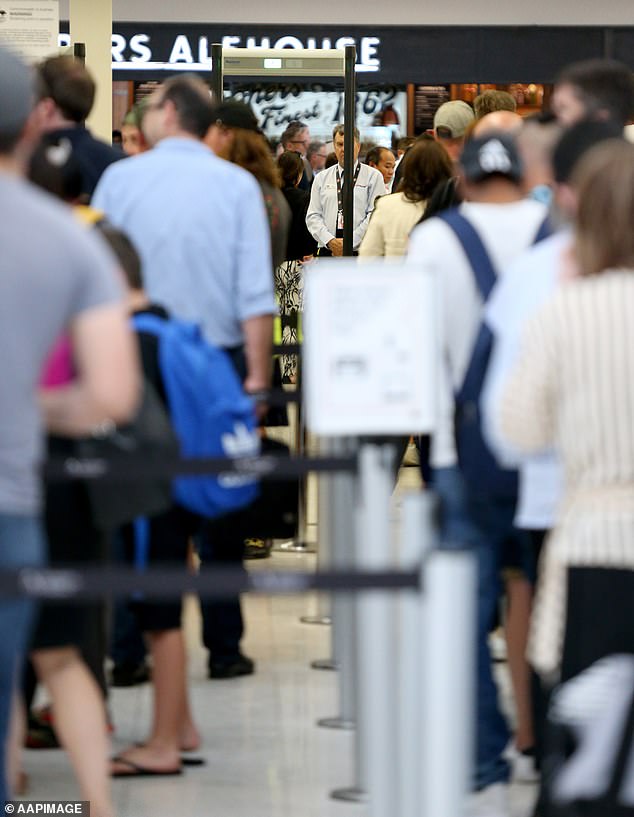More than 80,000 rejected asylum seekers remain in Australia despite having their protection claims rejected, with most enjoying full work and study rights.
While refugees who arrive by boat are detained in detention centers, those who arrive legally can stay for years even if their requests for protection are rejected.
Up to 61,525 of the 80,000 asylum seekers have work rights thanks to bridging visas, while 61,554 have study rights, new government data revealed.
A large number of people making asylum claims are international students, with those with Indian and Chinese passports the most likely to make an application.
Student visa holders submitted up to 2,135 applications in the first half of 2023.
More than 80,000 rejected asylum seekers who arrived legally in Australia are still here despite having their protection claims rejected (pictured, arrivals at Adelaide airport)
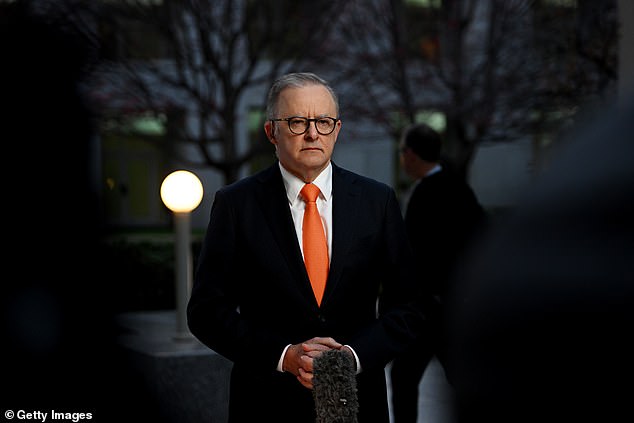
The revelation marks the latest immigration nightmare for Prime Minister Anthony Albanese.
Between March and April of this year, around 70 asylum seekers submitted an application for a final protection visa each day.
Only 17 rejected asylum seekers have been removed from Australia in the last two months, voluntarily or involuntarily.
The revelation marks the latest immigration nightmare for Prime Minister Anthony Albanese.
In November, the High Court released some 154 detainees, with several of them facing criminal offenses since being allowed to live in the Australian community.
Shadow Immigration Minister Dan Tehan said the data had exposed an “abuse of the asylum application process by non-genuine applicants”.
He claimed Australia’s “generous humanitarian programme”, which has provided visas for hundreds of Palestinians who fled the conflict, was being undermined.
“According to the Labor Party, only 15 per cent of asylum seekers on the mainland have a genuine claim to protection,” Mr Tehan said.
“Abuse of the asylum application process by non-genuine applicants undermines Australia’s generous humanitarian program and diverts time and money from supporting genuine refugees.”
“There are now more than 80,000 rejected asylum seekers in Australia waiting to be deported, and around 80 per cent still enjoy work and study rights, so they have no incentive to leave.”
Tehan said Labor was failing to weed out non-genuine applicants and attracting a record 1.67 million migrants in five years amid a housing crisis.
He warned: “The Coalition will look at why so many non-genuine asylum seekers remain in the country after having exhausted all their legal rights.”
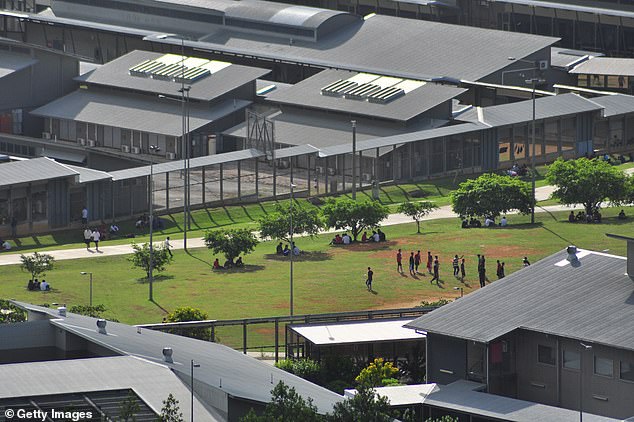
While refugees who arrive by boat are detained in detention centers (pictured), those who arrive legally can stay for years even if their protection claims are rejected.
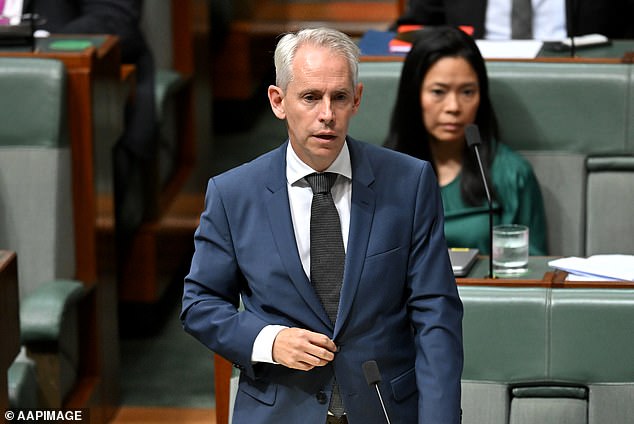
Immigration Minister Andrew Giles (pictured) accused Opposition Leader Peter Dutton of “destroying Australia’s immigration and border security system”.
Immigration Minister Andrew Giles accused opposition leader Peter Dutton of “destroying Australia’s immigration and border security system”.
‘Under the previous Liberal government, more than 140,000 people arrived in Australia and sought asylum on the mainland. We are cleaning up this mess,’ he stated.
Giles said Labor had invested $160 million to “restore the integrity” of Australia’s refugee protection system in a new reform package.
A nationwide increase in the number of people arriving in Australia over the past year has recently led the federal government to announce a halving of net overseas migration by 2025.
A record 548,800 net migrants moved to Australia in the year to September and Treasurer Jim Chalmers has admitted the huge influx of migrants, as well as international students, has caused a severe housing shortage and pushed prices up to unprecedented levels. .
With an election due in a year’s time, the Treasury now expects the 2023/24 migrant intake to fall to 395,000.
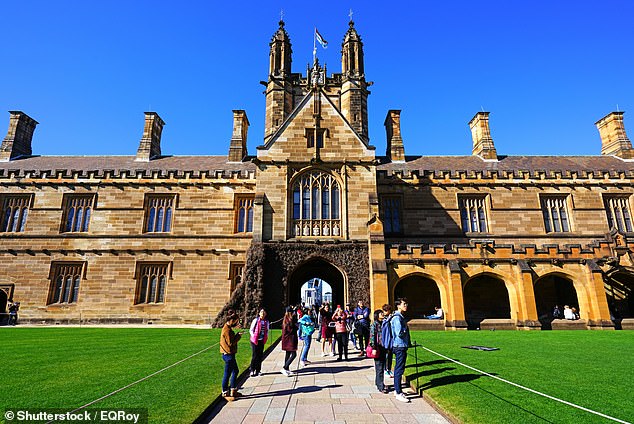
A large number of people making asylum claims are international students, with those with Indian and Chinese passports most likely to make an application (pictured, University of Sydney).
By the end of 2024/25, foreign entry was expected to halve, to just 260,000, down from 528,000 in 2022/23.
But in the five years to 2027/28, 1.38 million net migrants are still expected to move to Australia.
It comes as an Essential Research survey found that 43 per cent of people from migrant and refugee backgrounds were more likely to have experienced difficulty securing affordable housing in Australia in the past 12 months.
The survey also found that more than a quarter (26 per cent) had been forced to leave a property due to rising housing costs in the last year.
Immigrants are victims of rising prices but they are also seen as culpable: 49 percent feel unfairly blamed for the housing affordability crisis.

